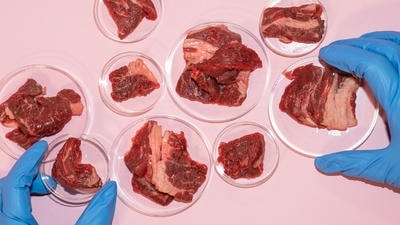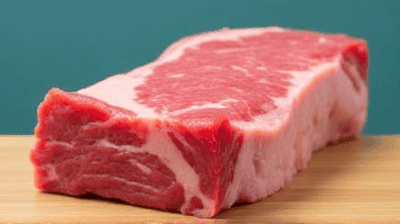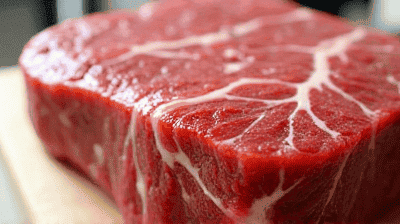
The quest for sustainable food sources has driven innovation in agriculture and food systems, resulting in various approaches to meet the demands of a growing global population. One of the most promising advancements in recent years is cellular agriculture, commonly known as lab-grown or cultured meat. This technology has the potential to revolutionize protein production by providing a more efficient and environmentally friendly alternative to conventional livestock farming.
Cellular agriculture refers to the process of producing agricultural products, particularly meat, by cultivating animal cells in a controlled environment, rather than raising and slaughtering animals. This innovative method involves extracting cells from animals and then using these cells to grow tissue that replicates the structure and taste of meat. The production process typically consists of three main stages:
Cell Sourcing: Animal cells are harvested from a living animal, usually through a minimally invasive procedure that does not harm the animal.
Cell Cultivation: The harvested cells are placed in a controlled lab environment where they are provided with a nutrient-rich culture medium that allows them to multiply and form muscle tissue.
Tissue Formation: Once enough cells have been cultivated, they are stimulated to form muscle tissue that resembles traditional meat, which can then be harvested for consumption.
The concept of lab-grown meat dates back to the early 2000s, but significant progress has been made in recent years. The first cultured meat burger was successfully created in 2013 by Dr. Mark Post, a Dutch scientist, who presented it at a media event in London. Since then, numerous companies have emerged, each working on different technologies and products within cellular agriculture. This rapid development reflects growing consumer interest and investment in sustainable food alternatives.

Traditional livestock farming is a leading contributor to greenhouse gas emissions, primarily due to methane produced by cattle during digestion (enteric fermentation) and nitrous oxide released from manure management. These gases have a much higher global warming potential than carbon dioxide. According to the Food and Agriculture Organization (FAO), the livestock sector accounts for approximately 14.5 percent of global greenhouse gas emissions.
Meat production requires significant land for grazing and growing feed crops. The conversion of forests into pastureland and cropland leads to biodiversity loss and increased carbon emissions from deforestation. In some regions, this process contributes to habitat destruction for countless species, further exacerbating the climate crisis.
The production of meat also places immense pressure on freshwater resources. It is estimated that producing one kilogram of beef requires around 15,000 liters of water when considering irrigation, animal hydration, and processing. This water-intensive process strains local water supplies, especially in arid regions.
The livestock industry often relies on antibiotics and hormones to promote growth and prevent disease in crowded conditions. The overuse of these substances can have negative consequences for public health, contributing to antibiotic resistance and potential health risks for consumers.
One of the most significant advantages of lab-grown meat is its potential to substantially reduce greenhouse gas emissions. Studies indicate that cellular agriculture can lower emissions by up to 90 percent compared to conventional meat production. By eliminating the methane generated by cattle and reducing the need for feed crops, lab-grown meat offers a promising pathway to mitigate climate change.
Lab-grown meat requires far less land compared to traditional livestock farming. Estimates suggest that producing lab-grown beef could reduce land use by more than 90 percent. Since cellular agriculture can be conducted in controlled environments, the need for expansive pastures and feed crops diminishes, allowing for more efficient land use.
Cellular agriculture also holds promise for conserving freshwater resources. Initial research indicates that producing lab-grown meat uses significantly less water—potentially up to 95 percent less than conventional beef production. This reduction in water use is vital in the face of global water scarcity and the need for sustainable resource management.
With lab-grown meat, there is no need for antibiotics or hormones typically used in livestock farming. This aspect not only helps improve animal welfare, but it also poses fewer risks to human health. By eliminating these chemicals from the production process, lab-grown meat aligns with the increasing consumer demand for clean and sustainable food sources.

As the global population continues to rise, the demand for protein is projected to increase dramatically. Lab-grown meat has the potential to meet this growing demand in a sustainable manner. By producing meat without relying on traditional livestock farming, cellular agriculture can help ensure a stable and consistent food supply.
Many consumers are concerned about animal welfare and the ethical implications of factory farming. Lab-grown meat addresses these concerns by reducing the need for animal slaughter. Cultured meat allows for the consumption of meat products while promoting a more humane approach to food production.
The rise of cellular agriculture can spark innovation within the food industry, creating new jobs and business opportunities in areas like food technology, research, and sustainable agriculture. As the market for lab-grown products expands, it can drive investment and economic growth while also addressing pressing food sustainability issues.
Lab-grown meat can also be engineered to optimize nutritional profiles. Researchers have the capability to enhance the nutrient composition of cultured meat, allowing for the potential to create products that are healthier than traditional meat. This might include tailoring the fat content, enriching proteins, or fortifying with vitamins and minerals.
As with any new technology, the regulatory landscape for lab-grown meat production presents challenges. Ensuring that cultured meat products are safe for consumption and meet food safety standards requires comprehensive oversight. Regulatory agencies must work to establish guidelines and frameworks for production, labeling, and marketing.
Consumer acceptance of lab-grown meat remains a significant hurdle. Many consumers may have apprehensions about the technology, fearing that it is unnatural or unfamiliar. Public education and awareness campaigns will be essential in addressing these concerns and promoting the benefits of cultured meat.
While lab-grown meat technologies have advanced considerably, scaling up production to meet increasing consumer demand poses logistical challenges. Establishing large-scale, cost-effective production facilities will be vital for making lab-grown meat accessible and affordable for consumers.
The cost of producing lab-grown meat remains relatively high compared to conventional meat. While prices have decreased in recent years, achieving price parity with traditional meat products is essential for widespread adoption. Continued investment in research and development will be crucial in reducing production costs and increasing efficiency.

Numerous startups and companies are at the forefront of cellular agriculture. Here are some notable examples:
Memphis Meats: Founded in 2015, Memphis Meats is one of the pioneers in the lab-grown meat industry. The company focuses on developing various cultured meat products, including beef and chicken.
Mosa Meat: Co-founded by Dr. Mark Post, Mosa Meat focuses on producing high-quality cultured beef. They aim to create products that resonate with consumers while promoting sustainability.
Aleph Farms: Known for its innovative approach, Aleph Farms specializes in producing lab-grown steak using a unique tissue engineering technique. The company emphasizes the importance of overcoming challenges related to texture, flavor, and authenticity.
Beyond Meat and Impossible Foods: While primarily known for their plant-based alternatives, both companies are exploring cellular agriculture and working on ways to bridge the gap between plant-based and lab-grown meat.
Eat Just: A leader in the cultured meat space, Eat Just produces lab-grown chicken products and seeks to promote sustainable food systems through innovation.
As the cellular agriculture industry matures, several milestones illustrate the growing acceptance and feasibility of lab-grown meat:
First Sale: In late 2020, Singapore became the first country to grant regulatory approval for the sale of lab-grown meat products. This landmark decision has paved the way for greater acceptance and potential expansion into other markets.
Investments and Partnerships: The lab-grown meat sector has attracted substantial investment from venture capital firms, established food companies, and research institutions. Collaborations with traditional meat producers illustrate the growing interest in sustainable protein solutions.
Consumer Tastings: Various tastings and events showcasing lab-grown meat have demonstrated its viability and taste. These opportunities provide valuable feedback for companies as they work to refine their products and enhance public acceptance.
As technology continues to advance and consumer awareness grows, several trends may shape the future of lab-grown meat:
Increased Production Capacity: With ongoing investments in research and technology, it is expected that production capacity for lab-grown meat will increase significantly, making it more accessible to consumers.
Product Diversification: As the technology matures, a wider variety of cultured meat products, including diverse species and cuts, may become available. This can help meet consumer preferences and dietary needs.
Integration with Plant-Based Alternatives: The lines between lab-grown meat and plant-based alternatives may blur as companies explore hybrid products that combine both technologies. This could offer consumers a broader range of sustainable protein options.
Progressive Regulations: As governments and regulatory agencies adapt to new technologies, streamlined approval processes for lab-grown meat products may emerge, facilitating faster market entry and consumer availability.
Sustainability Labeling: As awareness of sustainability issues rises, lab-grown meat products may carry special labeling that highlights their environmental benefits, making informed purchasing decisions easier for consumers.
Lab-grown meat represents a revolutionary step in the evolution of food systems and protein production. By providing a sustainable alternative to conventional meat, cellular agriculture has the potential to significantly reduce the environmental impact of food production while meeting the growing needs of a global population.
Despite remaining challenges regarding acceptance, regulation, and scalability, the numerous benefits of lab-grown meat make it a compelling choice for the future. As technology continues to evolve and consumer awareness grows, lab-grown meat may play a pivotal role in reshaping the way we perceive and consume protein.
By supporting innovative solutions like cellular agriculture, we can help foster a more sustainable food ecosystem that is kinder to the planet, animals, and our health. The journey towards a sustainable future begins with informed choices and a commitment to alternative protein sources that can pave the way for a food system that prioritizes environmental health and sustainability.